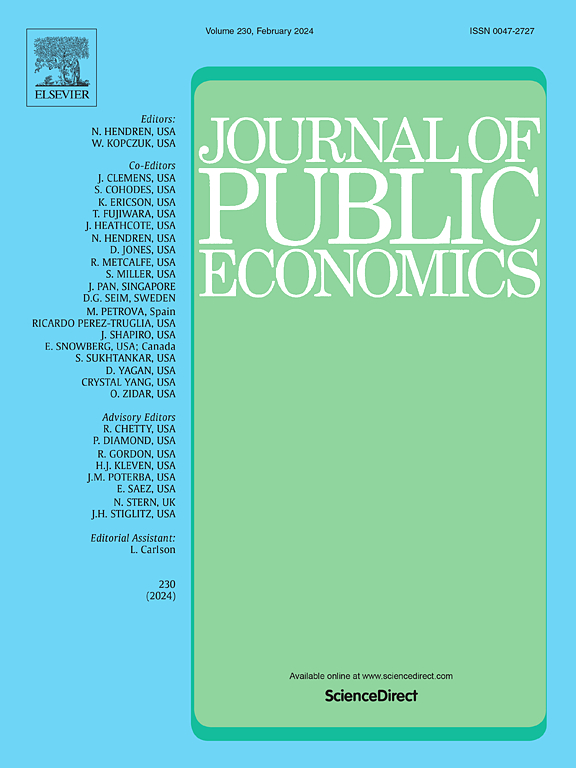Declining earnings inequality, rising income inequality: What explains discordant inequality trends in the United States?
IF 4.8
1区 经济学
Q1 ECONOMICS
引用次数: 0
Abstract
From 2010 to 2019, personal earnings inequality declined in the United States (U.S.) for the first time in decades, yet household income inequality continued to increase. Discordance between the inequality trends reached its highest rate in recent history. We introduce a framework to decompose differences in inequality trends. We find that 46% of post-2010 discordance in inequality trends is due to changing household composition, namely a larger share of young workers living with their parents and combining low (but increasing) personal earnings with high household incomes. The remaining discordance stems from increases in private income among higher-earning households and declining redistributive effects of government transfers. Declines in personal earnings inequality do not imply declines in household income inequality.
收入不平等下降,收入不平等加剧:如何解释美国不平等的趋势?
2010年至2019年,美国个人收入不平等几十年来首次下降,但家庭收入不平等继续加剧。不平等趋势之间的不协调达到了近年来的最高水平。我们引入了一个框架来分解不平等趋势的差异。我们发现,2010年后不平等趋势中46%的不一致是由于家庭构成的变化,即年轻工人与父母同住的比例增加,个人收入低(但在增加),家庭收入高。剩下的不一致源于高收入家庭私人收入的增加和政府转移支付的再分配效应下降。个人收入不平等的减少并不意味着家庭收入不平等的减少。
本文章由计算机程序翻译,如有差异,请以英文原文为准。
求助全文
约1分钟内获得全文
求助全文
来源期刊

Journal of Public Economics
ECONOMICS-
CiteScore
14.10
自引率
2.00%
发文量
139
审稿时长
70 days
期刊介绍:
The Journal of Public Economics aims to promote original scientific research in the field of public economics, focusing on the utilization of contemporary economic theory and quantitative analysis methodologies. It serves as a platform for the international scholarly community to engage in discussions on public policy matters.
 求助内容:
求助内容: 应助结果提醒方式:
应助结果提醒方式:


